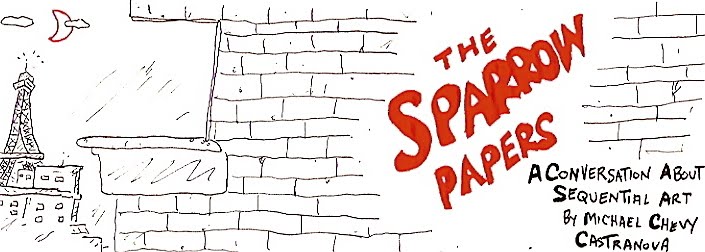 I hadn’t thought of that before.
I hadn’t thought of that before.In his interview in Todd Hignite’s fascinating In the Studio: Visits With Contemporary Cartoonists, Chris Ware shows the work of Japanese cartoonist Suiho Tagawa, “my fourth-favorite cartoonist who’s no longer alive.” Tagawa in the 1930s produced big, wide-open-vista colorful pictures that depicted multiple characters in myriad scenarios — all in one image.
“This,” Ware contends, “is the course comics should’ve taken before they got sidetracked and transformed by the language of cinema in the 1930s.
“As near as I can tell, the Japanese understanding of art is almost a sort of simultaneous reading and seeing, where ours is purely seeing ….”
I hadn’t considered the notion of cartoons having been hijacked at some stage by a movie-form — i.e., a sequential form, with dramatic camera-like angles — of storytelling. (My guess is Ware would name as the chief culprit Milton Caniff, who made the most of a cinematic look with his popular Terry and the Pirates.)
And I hadn’t ever thought about that being wrong.
See my earlier post on this book here.
And you can see Ware display his Gasoline Alley collection in a video interview by Chicago NPR radio station WBEZ here. (I always meant to try to finagle a visit to Ware’s house when I also lived in Oak Park, but it never happened.)
More on In the Studio to come.

No comments:
Post a Comment